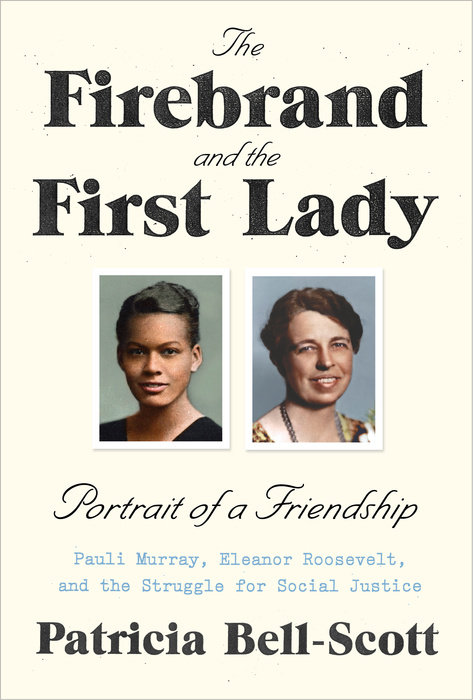‘The Firebrand and the First Lady,’ by Patricia Bell-ScottPosted in Articles, Biography, Book/Video Reviews, History, Media Archive, United States, Women on 2016-04-03 02:40Z by Steven |
‘The Firebrand and the First Lady,’ by Patricia Bell-Scott
Sunday Book Review
The New York Times
2016-02-19
 Pauli Murray, in 1946, and Eleanor Roosevelt, circa 1943. Credit Left, Bettmann/Corbis; right, Stock Montage/Getty Images |
Patricia Bell-Scott, The Firebrand and the First Lady: Portrait of a Friendship: Pauli Murray, Eleanor Roosevelt, and the Struggle for Social Justice (New York: Alfred A. Knopf, 2016)
The February 1953 issue of Ebony included an article entitled “Some of My Best Friends Are Negroes.” The byline was Eleanor Roosevelt’s, though the headline, apparently, was not. “One of my finest young friends is a charming woman lawyer — Pauli Murray, who has been quite a firebrand at times but of whom I am very fond,” Roosevelt wrote. “She is a lovely person who has struggled and come through very well.” Indeed, nothing was ever easy for Murray, a black woman born in 1910, a woman attracted to women and also a poet, memoirist, lawyer, activist and Episcopal priest. But her tender friendship with Roosevelt, sustained over nearly a quarter-century and more than 300 cards and letters, helped. It is the rich earth Patricia Bell-Scott tills for “The Firebrand and the First Lady,” a tremendous book that has been 20 years in the making.
You could say Pauli Murray was born too soon, and saying so captures the essential injustice of her life, but it would also rob her of credit for making her own time the best she could. “I’m really a submerged writer,” Murray once told her friends, “but the exigencies of the period have driven me into social action.” The granddaughter of a woman born into slavery and a mixed-race Union soldier, Murray was arrested for refusing to sit in the colored section of a bus 15 years before the Montgomery bus boycott and for participating in restaurant sit-ins in the early 1940s, long before the 1960 sit-ins at Woolworth’s lunch counter. She led a national campaign on behalf of a black sharecropper on death row…
Read the entire review here.
